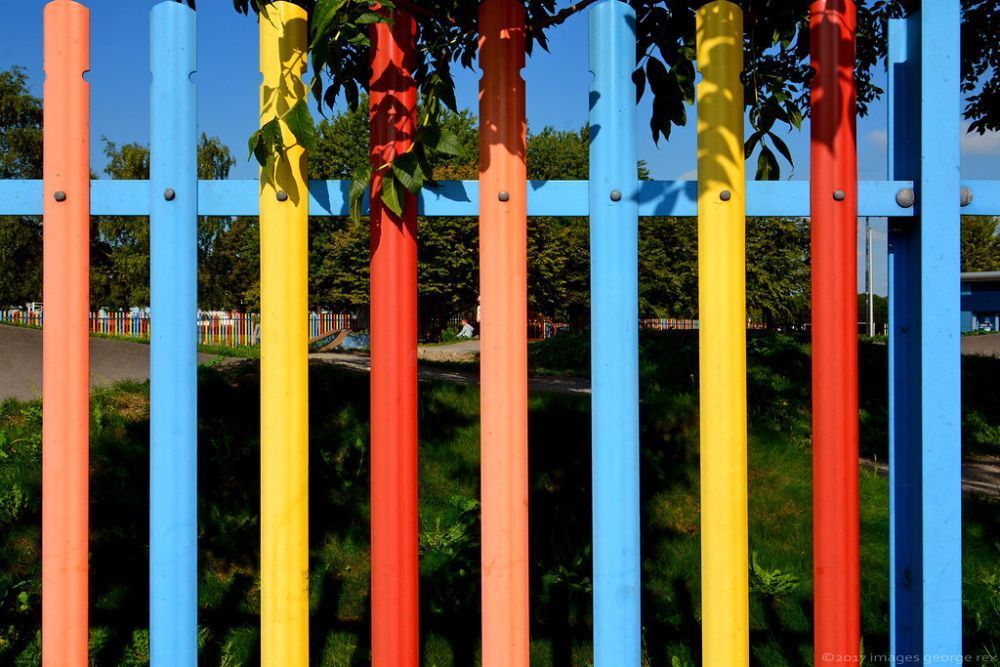
How Are Palisade Pales Made?
Palisade fences are popular in most parts of the world, and there is a huge variety of heights, styles, and designs available out there. There are palisade fences with IPE posts, some with square posts, and even some that use round posts. Some use fishplates, others use various types of brackets.
Palisade fences come in a huge variety of heights and panel widths, painted, coated and galvanized and more. However, there’s one thing all palisade fences have in common: they require palisade pales, which are welded or bolted to the panel’s horizontal rails.
It Starts With Slitting Steel Coil
Unless you are using angle iron palisade pales, the first step in manufacturing a palisade pale is to slit the steel coil that will be used to roll it.
Slitting a coil basically means that the steel supplier will take a huge rolled steel coil and cut slices off it, much like you would slice salami. These “slices” can be made in different widths, which are used to manufacture different types of palisade pales.
Many palisade manufacturers also get slit coils in different thicknesses so that they can manufacture lighter and heavier pales for various applications.
Roll Forming Pales
Once the steel coil being used for pales is slit into the right widths, the coil is used on a roll-forming machine that is fitted with various shapes that create the palisade profiles as the metal passes through the forms.
The most common palisade pale profiles in most parts of the world are what we call D profile pales and W profile pales, and many modern roll-forming machines will have the tooling required to roll both types of pales.
Roll-forming machines work very quickly, too, and can produce hundreds or even thousands of pales in a day.
Head and Bottom Profiles
The last thing that needs to be done when roll forming palisade fences is to cut and shape the head of the pale and cut the bottom.
Head styles for palisade pales vary enormously and could be rounded or flat (often used for public spaces where spiked options would be dangerous), spear-pointed, trident or triple-pointed, and pointed and notched options.
The bottom of palisade pales are usually cut flat, but sometimes, especially if the top is being cut into a point, the bottom might be left with the “swallowtail” shape created by cutting the top of the next pale. This adds a little extra strength to the bottom of the fence.
Punching Holes
Many palisade fence systems are bolted together on-site, and if the pales are being used for that sort of fence system, the pales will need to be punched before they are finished and shipped out.
Holes can usually be punched at the height or distance from the ends that the customer specifies, and this is usually done on a special machine that can punch the exact size of hole needed with a high degree of accuracy and very quickly.
Galvanizing and Coating
Palisade pales are sometimes made from pre-galvanized steel, but this leaves the edges that are cut during the slitting process unprotected from corrosion, so it usually results in a less durable product.
Instead, most quality palisade pales are hot dip galvanized, either as individual components or after they are welded to a welded panel palisade fence system.
Palisade pales can also be painted or powder coated to add esthetic appeal and increase the corrosion protection of the fence.
Buy a Roll Forming Machine or Find a Roll Former
If you are interested in using roll-formed palisade fence pales for your fence projects, there are two basic options: buy a roll-forming machine or find a company that can do the roll forming for you.
Palisade pale roll forming machines range from relatively cheap and simple options that require a lot of manual work to run to fully automated machines costing more than a million dollars.
Finding a roll former who can roll your palisade pales for you is often a simpler choice than sourcing the right machine for your business and learning how to use it, but if they’re busy and in demand, you might have very long waits for your pales.
Whatever you choose to get your palisade pales made, now you know how this popular fence component is made.


